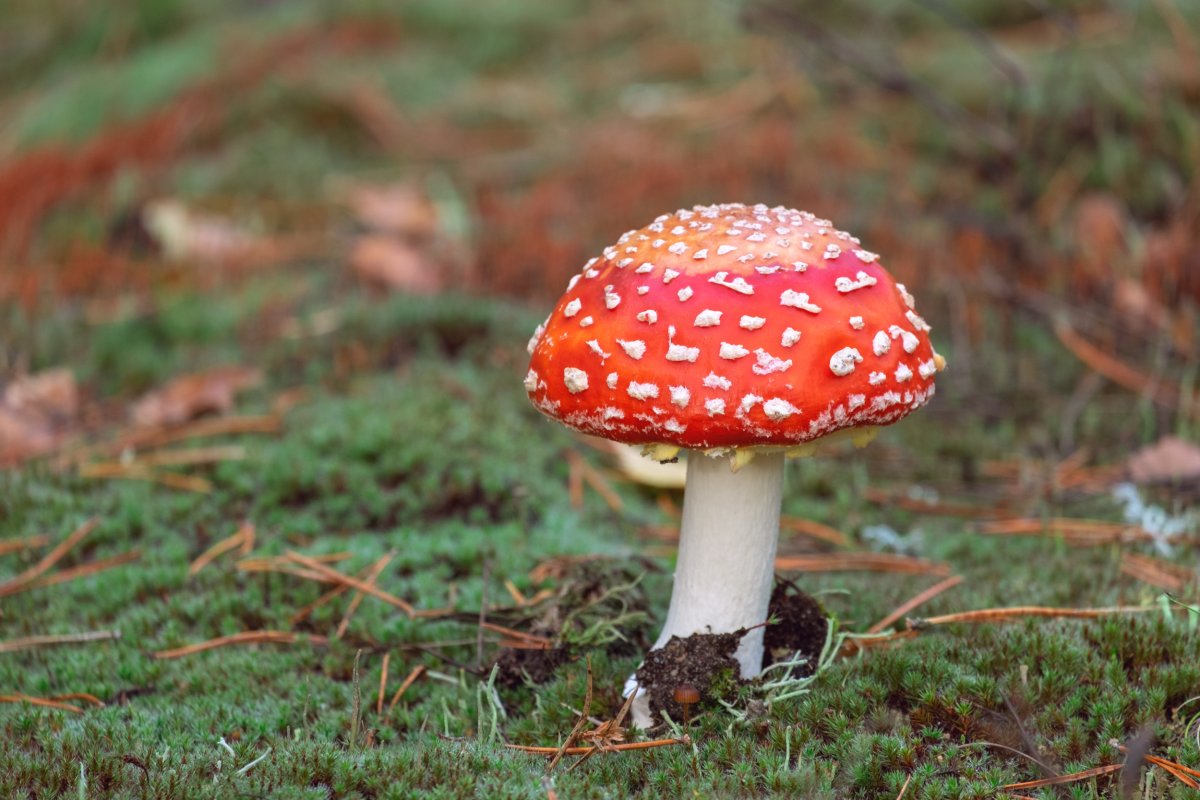A spate of poisonous toadstools straight out of a fairytale or a Mario game have been popping up around Lake Tahoe, which straddles the California-Nevada border, risking the health of foragers.
These mushrooms, known as fly agarics, have a bright red domed top with white spots across it, just like Mario's superpowered fungi, and are toxic if eaten.
Due to the blooming of these mushrooms in the Lake Tahoe Basin, spurred by exceptionally wet and cool conditions in the region, local healthcare providers have seen an uptick in people coming in unwell due to eating the strange fungi.
"A small number of patients have recently presented in our emergency department after having ingested these amanita mushrooms," Kendra Yee, an emergency physician at South Lake Tahoe healthcare system Barton Health, told local newspaper The Sacramento Bee. "All were children."
Fly agaric mushrooms, also known by their scientific name amanita muscaria, are sometimes eaten by accident by people foraging for other mushrooms: young forms of the mushrooms may resemble edible puffball mushrooms, while heavy rain can also wash off the white spots of the fly agaric and make them appear similar to Caesar's mushrooms.
Alternatively, sometimes people deliberately eat these mushrooms to get a hallucinogenic high, as they contain the psychoactive substance muscimol and the neurotoxin ibotenic acid, which converts to muscimol inside the body.
The poisonous #AmanitaMuscaria mushroom is causing illness in humans and pets at #LakeTahoe. @BartonHealth has seen some cases in the ER and alerting the public. https://t.co/4NnbRDrdtN pic.twitter.com/6VL6j49uQS
— South Tahoe Now (@SouthTahoeNow) October 11, 2023
"[Fly agarics] contain psychoactive alkaloids and the fly agaric can contain muscimol, ibotenic acid, muscarine and muscazone, but combinations and concentration can vary. The death cap also contains amatoxins. They contain these chemicals to attract and kill insects that provide them nutrition," Gregory Moore, a senior research associate in ecosystem and forest sciences, at the University of Melbourne, told Newsweek.
"Because they vary in content of psychoactive chemical content, the number that you consume that might cause serious health problems or death varies. One could prove poisonous if it has high concentrations of the various active components. Individuals also respond differently to the same dose. So the take home message is to leave them alone."
The mushroom also contains several substances that are toxic to the human body, including ibotenic acid, muscazone and vanadium. Poisoning from these mushrooms can result in symptoms appearing within an hour of ingestion, and peaking within three, and can last for up to 24 hours.
A patient may experience headaches, abdominal distress, hallucinations, sleepiness, diarrhea and vomiting, as well as delirium, bouts of agitation, mood swings and loss of balance.
"The psychoactive effects (euphoria, out of body experiences and synesthesia) usually start about an hour after eating and may last up to three hours," Karen W. Hughes, a professor of ecology and evolutionary biology at the University of Tennessee, told Newsweek. "Negative effects include nausea and muscle contractions. The effects will depend on the number of mushrooms eaten and the mushroom itself (how much Ibotenic acid the mushroom has which can vary between mushrooms). Apparently, boiling the mushroom and discarding the cooking water twice can prevent the side effects"
Poisoning can be especially damaging to children and pets, as it takes fewer of the toxins to reach dangerous levels in their smaller bodies. The elderly and the chronically ill are also more at risk. However, while these mushrooms are considered deadly, the North American Mycological Association states that there have been "no reliably documented cases of death from toxins in these mushrooms in the past 100 years," especially thanks to modern medicine.

Treatment for someone who has ingested these mushrooms within four hours of seeking medical aid includes activated charcoal, but after this point, all doctors can do is provide supportive care while the body clears the toxins itself.
The spate of poisonings may have been driven by the weather, causing increased numbers of the mushrooms to crop up around Lake Tahoe.
"The high amounts of precipitation this year in California have created favorable conditions for many types of mushrooms," Patricia Kaishian, a curator of mycology at the New York State Museum, told Newsweek. "The heavy snow and rains followed an extended drought, and therefore people may be unfamiliar with the number of mushrooms in their area. In the last few years, there has been a surge of public interest in mycology—the study of mushrooms. I would guess that this increased interest, plus the increased fruitings of mushrooms in California, are leading to more people to attempt to forage."
Around 1,400 people go to the ER every year across the country due to accidental mushroom poisoning, a study by the Centers for Disease Control and Prevention found.
Foragers are warned by Barton Health and U.S. Poison Control not to eat wild mushrooms without expert confirmation that they are safe to consume.
"As I mycologist I always advise people never to eat a wild mushroom without consulting with an expert. The use of digital tools for identification (such as iNaturalist) can be helpful, but are often incorrect not a replacement for consulting an expert. To learn more about mycology, people should join a local mycological club or society. It often takes many years of study before someone can learn enough to safely consume wild mushrooms," Kaishian said.
"I also want to add, mushrooms and other fungi are important organisms in our ecosystems. Our landscapes require fungi to function, and they are not 'bad.' While people should not eat mushrooms which they are not familiar with, we also should not fear them."
Do you have a tip on a science story that Newsweek should be covering? Do you have a question about mushrooms? Let us know via science@newsweek.com.
Update 10/17/23, 11:26 a.m. ET: This article has been updated with comment from Gregory Moore, Karen W. Hughes and Patricia Kaishian.
Uncommon Knowledge
Newsweek is committed to challenging conventional wisdom and finding connections in the search for common ground.
Newsweek is committed to challenging conventional wisdom and finding connections in the search for common ground.
About the writer
Jess Thomson is a Newsweek Science Reporter based in London UK. Her focus is reporting on science, technology and healthcare. ... Read more
To read how Newsweek uses AI as a newsroom tool, Click here.








